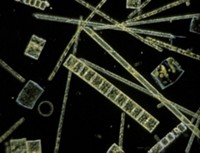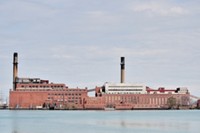Advertisement
Grab your lab coat. Let's get started
Welcome!
Welcome!
Create an account below to get 6 C&EN articles per month, receive newsletters and more - all free.
It seems this is your first time logging in online. Please enter the following information to continue.
As an ACS member you automatically get access to this site. All we need is few more details to create your reading experience.
Not you? Sign in with a different account.
Not you? Sign in with a different account.
ERROR 1
ERROR 1
ERROR 2
ERROR 2
ERROR 2
ERROR 2
ERROR 2
Password and Confirm password must match.
If you have an ACS member number, please enter it here so we can link this account to your membership. (optional)
ERROR 2
ACS values your privacy. By submitting your information, you are gaining access to C&EN and subscribing to our weekly newsletter. We use the information you provide to make your reading experience better, and we will never sell your data to third party members.
Environment
Tracking Zinc In The Environment
August 25, 2008
| A version of this story appeared in
Volume 86, Issue 34
Researchers at the University of Paris Diderot, in France, have used zinc isotopes to follow zinc-bearing pollution as it travels through the environment (Environ. Sci. Technol., DOI: 10.1021/es800725z). Dissolved zinc works nicely as a tracer because biological activity does not degrade its isotopic signature as it moves through water and soil. Jiubin Chen and colleagues sampled water from locations in the Seine River Basin in France between 2004 and 2007. They measured 66Zn/64Zn ratios by an inductively coupled plasma mass spectrometry technique. Because each natural or anthropogenic source of zinc has a particular isotopic signature, the researchers determined that approximately 90% of the dissolved zinc in the Seine originates from anthropogenic sources. For example, the team traced a large percentage of contamination back to zinc leached by rain from roofing material in Paris and carried to the river in storm runoff. The researchers say that the absence of distinctive signatures of fertilizer, compost, or rainwater from rural areas suggests that soils there retain zinc.





Join the conversation
Contact the reporter
Submit a Letter to the Editor for publication
Engage with us on Twitter